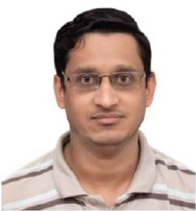ABOUT THE COURSE :
Applied electromagnetics for engineers is designed to be an application oriented course while covering all the theoretical concepts of modern electromagnetics. It begins by an in-depth study of transmission lines which play an important role in high-speed digital design and signal integrity of PCBs. After a brief review of necessary mathematics (coordinate systems, vector analysis, and vector fields), the course covers analytical and numerical solution of Laplace's and Poisson's equations, quasi-static analysis of capacitors and skin effect, inductance calculations, and Maxwell equations. Wave propagation in free-space, ferrites, and peroidic media are covered along with waveguides (rectangular, planar dielectric, and optical fibers) and antennas. The course includes a balance between theory, programming, and applications. Several case studies will be discussed.
Intended Audience :UG 2nd, 3rd Year
Prerequisites : Electricity and magnetism at the level of high-school, Vector analysis, Differential and integral calculus, programming using Matlab (preferable)
Industries that will recognize this course :Core UG course that is necessary for follow up courses on high speed digital design, RF and microwave, fiber optics, antennas. Companies/Industry such as Sterlite, Analog Devices, GE, Comsol India, Matlab, Texas Instruments, Defense labs etc will be interested.

DOWNLOAD APP
FOLLOW US